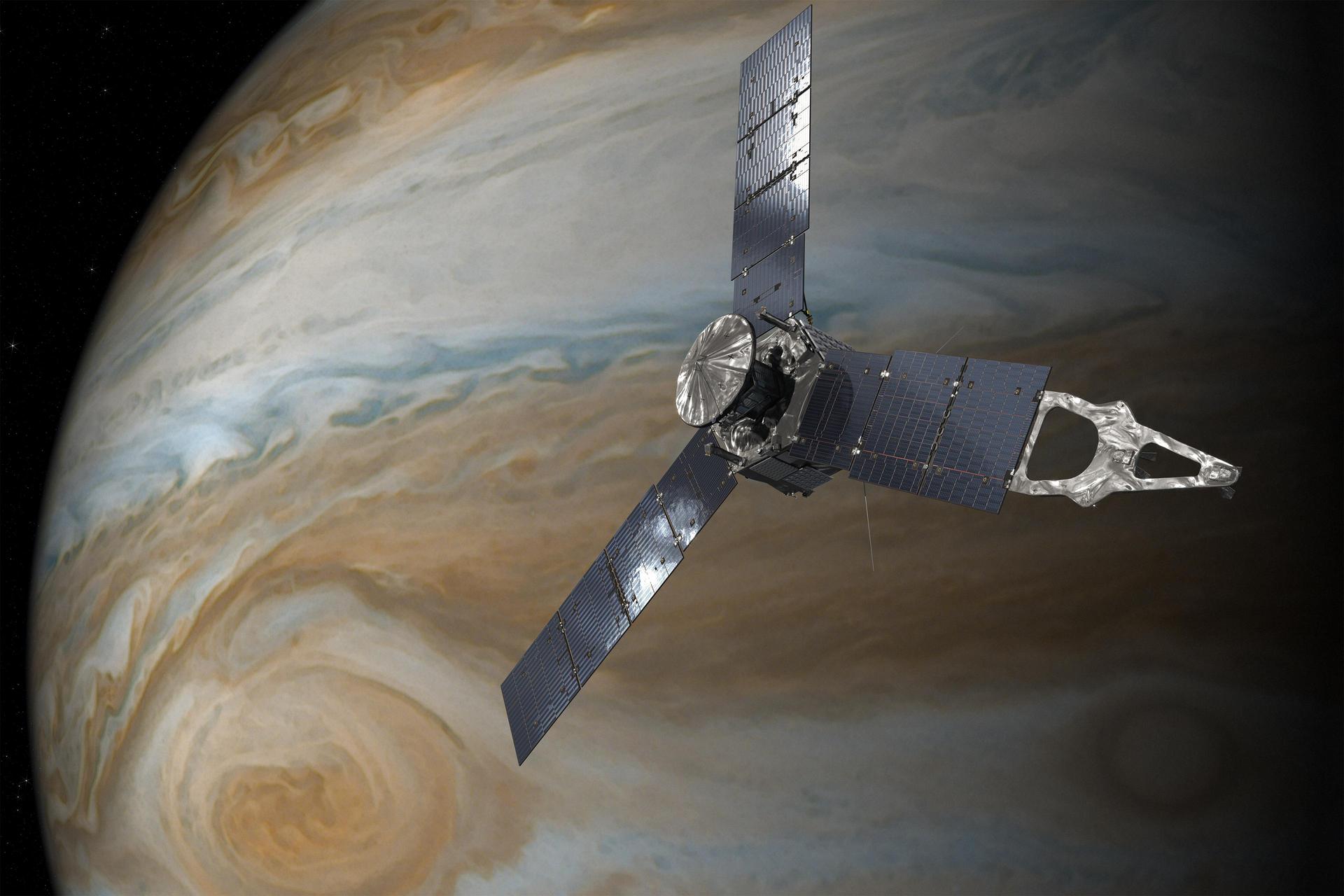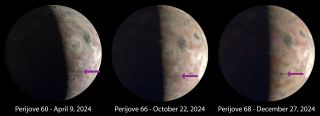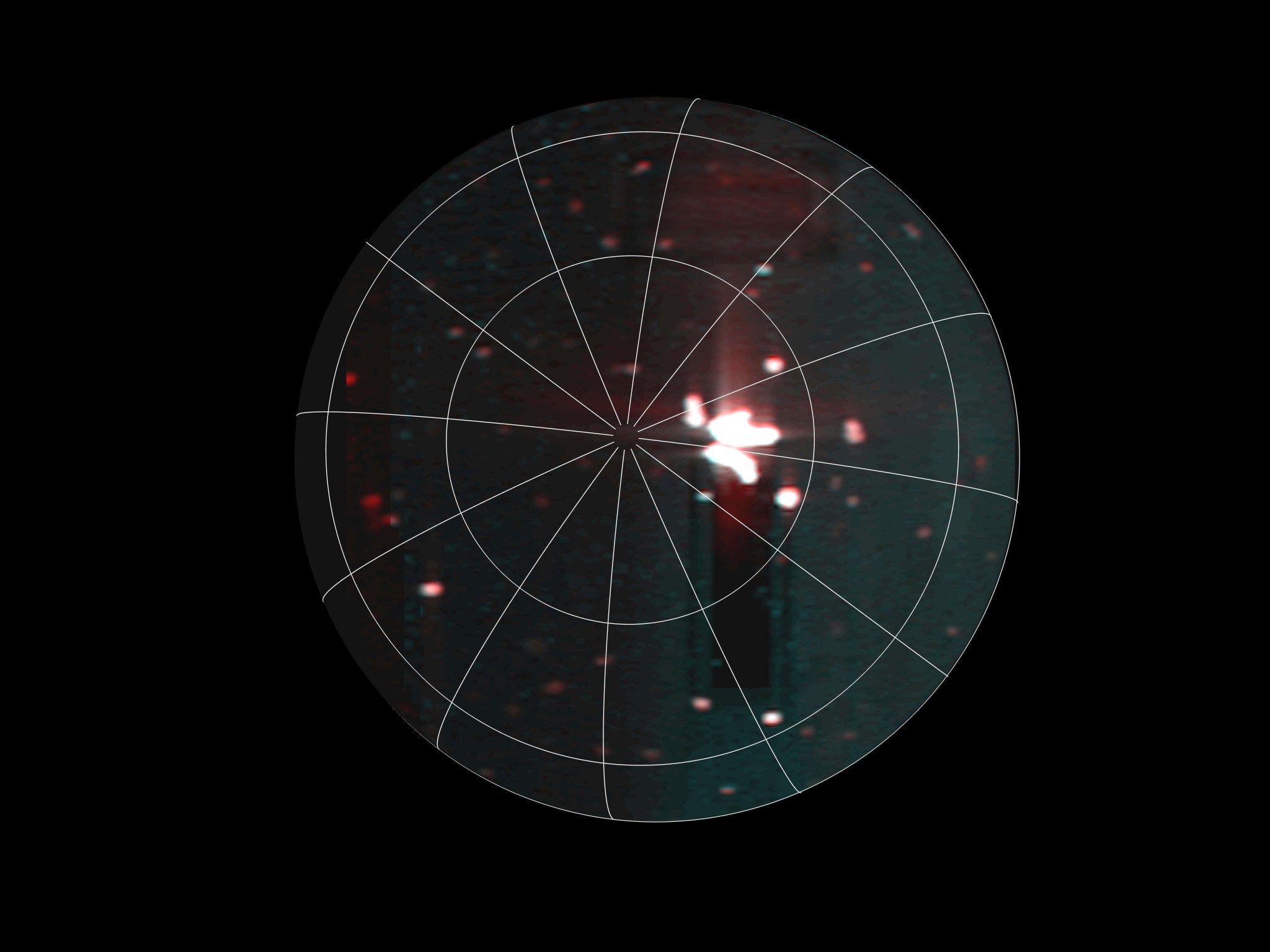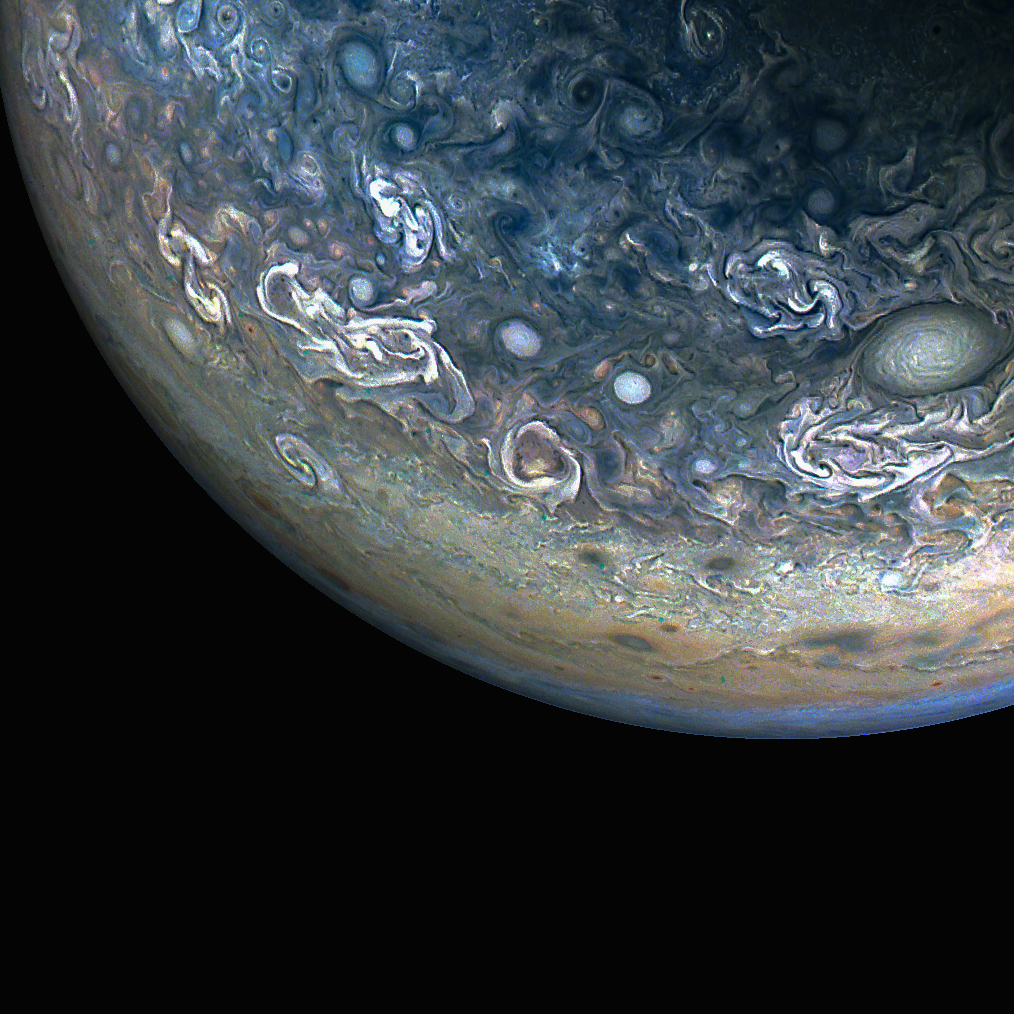3 min read NASA’s Juno Back to Normal Operations After Entering Safe Mode NASA’s Juno flies above Jupiter’s Great Red Spot in this artist’s concept. NASA/JPL-Caltech The spacecraft was making its 71st close approach to Jupiter when it unexpectedly entered into a precautionary status. Data received from NASA’s Juno mission indicates the solar-powered spacecraft went into safe mode twice on April 4 while the spacecraft was flying by Jupiter. Safe mode is a precautionary status that a spacecraft enters when it detects an anomaly. Nonessential functions are suspended, and the…
Read MoreTag: Juno
NASA’s Juno spacecraft watches most powerful volcanic event ever seen on Jupiter’s moon Io
Even for Jupiter’s moon Io, the most volcanic body in the solar system, a recent volcanic event witnessed by NASA’s Juno spacecraft takes the biscuit. The event was just one eruption centralized in a newly found hotspot region of Io estimated to be larger than Lake Superior on Earth. The currently unnamed region is so powerful that the energy it belts out is equivalent to six times the energy produced by all of Earth’s power plants combined. The team behind these findings used data collected by Juno, which made flybys…
Read MoreNASA Juno Mission Spots Most Powerful Volcanic Activity on Io to Date
5 min read Preparations for Next Moonwalk Simulations Underway (and Underwater) A massive hotspot — larger the Earth’s Lake Superior — can be seen just to the right of Io’s south pole in this annotated image taken by the JIRAM infrared imager aboard NASA’s Juno on Dec. 27, 2024, during the spacecraft’s flyby of the Jovian moon. NASA/JPL-Caltech/SwRI/ASI/INAF/JIRAM Even by the standards of Io, the most volcanic celestial body in the solar system, recent events observed on the Jovian moon are extreme. Scientists with NASA’s Juno mission have discovered a…
Read MoreWhat causes volcanic eruptions on Jupiter’s moon Io? Scientists aren’t so sure anymore
Jupiter’s volcanic moon Io doesn’t appear to have a subsurface ocean of magma, resolving some issues about how Io’s volcanoes erupt and raising broader questions about similar magma oceans within other moons and planets. Data from previous missions had made planetary scientists wonder whether, rather than just pockets of melt, Io contained a 31-mile (50-kilometer) deep layer of magma: a moon-wide ocean of molten rock. In the 1990s, NASA’s Galileo mission performed magnetic induction measurements that suggested there was such a layer, while more recently, the distribution of volcanoes on…
Read MoreNASA’s Juno Mission Captures the Colorful and Chaotic Clouds of Jupiter
Image data: NASA/JPL-Caltech/SwRI/MSSSImage processing by Gary Eason © CC BY During its 61st close flyby of Jupiter on May 12, 2024, NASA’s Juno spacecraft captured this color-enhanced view of the giant planet’s northern hemisphere. It provides a detailed view of chaotic clouds and cyclonic storms in an area known to scientists as a folded filamentary region. In these regions, the zonal jets that create the familiar banded patterns in Jupiter’s clouds break down, leading to turbulent patterns and cloud structures that rapidly evolve over the course of only a few…
Read MoreNASA’s Juno to Get Close Look at Jupiter’s Volcanic Moon Io on Dec. 30
This image revealing the north polar region of the Jovian moon Io was taken on October 15 by NASA’s Juno. Three of the mountain peaks visible in the upper part of image, near the day-night dividing line, were observed here for the first time by the spacecraft’s JunoCam. Image data: NASA/JPL-Caltech/SwRI/MSSS, Image processing by Ted Stryk The orbiter has performed 56 flybys of Jupiter and documented close encounters with three of the gas giant’s four largest moons. NASA’s Juno spacecraft will on Saturday, Dec. 30, make the closest flyby of…
Read MoreThe Roots of Jupiter’s Great Red Spot Run Deep
NASA’s Juno mission has obtained measurements that finally say just how deep the Great Red Spot goes. The post The Roots of Jupiter’s Great Red Spot Run Deep appeared first on Sky & Telescope.
Read MoreJuno’s Ganymede Flyby: A Giant Moon, a Long History
NASA’s Juno will fly by Jupiter’s Ganymede, the biggest moon in the solar system, on June 7, 2021. This will be the eighth flyby of the space age. The post Juno’s Ganymede Flyby: A Giant Moon, a Long History appeared first on Sky & Telescope.
Read More



